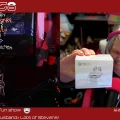Red Hat remains independent! Kernel support for IDE reaches EOL, GNOME explains the basics, and a Raspberry Pi on the half shell.
Timestamps:
03:14 Red Hat remains independent
07:28 Linux Kernel Prior to 5.0.8 Vulnerable
09:53 Linux app store
13:39 IDE removed from kernel
17:00 Low latency kwin
21:48 GNOME basics
25:06 LVFS call for assistance
28:13 Saving Linux
30:56 2019 year of the Linux desktop
34:40 Relay Pi
36:45 Clam shell Pi
39:42 Your emails
Subscribe:
Listen:
Download:
Subscribe Spotify | Pandora | TuneIn | RSS | More
Colour key – Venn Jill Pedro
- They didn’t buy it because they were making bad decisions.
- IBM CEO Ginni Rometty stated once again that Red Hat would remain independent as promised.
- IBM has been a great steward to open source and was one of the first companies to embrace Linux with using Apache in 1998 and invested 1 Billion dollars in Red Hat in 1999.
- I enjoyed watching many of the keynotes at last weeks Red Hat Summit in Boston, and IBM CEO Ginni Rometty keynote with Red Hat CEO Jim Whitehurst was one of the highlights.
- Ginni during the keynote talked about the importance of an ecosystem to drive innovation, that open governance in open source is vital and “If your going to take you have to give.” And that Red Hat “Has built a wonderful culture about open.”
- Allowing your purchase to keep doing what made them profitable in the first place is a very good idea.
- EA needs to take notes!
- Calm down everyone, the CEO of the parent company said everything is cool.
- CEOs are beacons of honesty and trust.
Linux Kernel Prior to 5.0.8 Vulnerable (RTHeren)
- Just a quick note, update your business.
- Also worth a mention, there is a new fancy Intel flaw.
- With all the nerfing of hyperthreading I’m surprised there is not a class action suit.
- It’s a frontend to AppimageHub, flathub, and snapcraft.
- Honestly, I wouldn’t be opposed to having a plugin on Discover or GNOME Software or even for Synaptic/DNF-Agora
- Excellent idea Pedro! Yeah this needs to be integrated into all of the software centers.
- The Ubuntu Gnome Software center only shows repository apps and Snaps and the Gnome Software app on Fedora only shows repository apps and Flathub apps.
- Searches work great on desktop or mobile.
- When I did a search for the Gimp it came up with the AppImage and Snap apps versions, and linked to the appropriate websites to download them via AppImageHub and snapcraft.io.
- XKCD 927.
- Not so much a store as a searchable frontend.
- When searching it does not tell you if it’s a flatsnapapp.
- I could not find an app that was available on two package formats.
- Curious how it deals with that.
- I started to get out the pitchfork but looked around the house, no IDE.
- SATA has been around since the year 2000 and is almost 20 years old, so makes sense that the older IDE interface gets deprecated from the Linux kernel..
- David Miller is the maintainer for the IDE subsystem in the Linux kernel as well as the networking subsystem and SPARC implementation.
- I guess the kernel for the T42 will stuck in the 5.1 series then.
- Hopefully, someone will create a separate package to reintroduce IDE support.
- WD stopped production in 2013 and Seagate before that.
- It’s not like you can buy a new one.
- Tried it second time on my Manjaro box. First time, it was more stuttery than original kwin.
Second time, it just dumps core, and that’s it.
- I’m not entirely sure introducing vsync is the best way to lower latency.
- KWin has a lot of issues, specifically compositing issues and random disappearance of icons in the tray.
- But most of these issues can be worked around by disabling compositing or using compton instead.
- 97.7 FM.
- The #1 feature of kwin as listed on userbase.kde.org
- Stable and reliable
- That’s not 100% the case and good on tildearrow for trying to do something about it.
- Like KDE, this is not recommended for low-end systems.
- “I’ve been working in the GNOME community for a little under a year and a half now”
- Oh, sweet innocence! May you never be corrupted.
- I hope one of the future posts includes a detailed description of the mental gymnastics which birthed GNOME 3!
- Or, maybe we’ll get an inside view of whatever mind-boggling decision making takes place for GNOME 4.
- Since Pedro can’t be bothered to put down his glass of haterade.
- Chris gives a nice tl;dr at the end.
- “I’ve been working in the GNOME community for a little under a year and a half now”
- “GNOME is a community of individuals each with their own motivations and vision for their own part of the project doing their best to build a great platform for users.”
- So if a project developer will not implement a feature (or sort a bug) there is no point in trying to tell their boss.
- They don’t have one.
LVFS call for assistance
- Richard Hughes is asking the Linux community for our help, and a simple way to contribute to the LVFS that will only take a few minutes of your time.
- He is working on a new feature for the Linux Vendor Firmware Service that will include human readable descriptions of each module loaded by the UEFI, instead of just the high level firmware descriptions that consist of code and numbers by the vendors.
- This way when changes are made to the modules they will be easy to identify.
- With an easy Google and DuckDuckGo search I contributed to Richard Hughes UEFI Modules description Google Doc:
- RealtekPxe: This module loads Network Boot, or the Preboot Execution Environment (PXE) found on many ASUS motherboards using the Realtek Ethernet card chipset.
- 5 minutes is a bit optimistic.
- Tracking this stuff down can take hours.
- Alarmist, click-baity, article title aside, there is a point here.
- Doc Searls editor-in-chief of Linux Journal writes “We collaborate inside proprietary environments, such as Slack and Google Hangouts.” This is very true for the most part, although I am seeing many more companies moving to open source options, such as Rocket.Chat and Mattermost.
- Doc Searls later in the article states with concern “One might even argue that most of the Linux deployed in the world today is embedded inside proprietary and closed devices.”
- After reading this article several times, and seeing Lawrence Lessig, Cory Doctorow and Vint Cerf speak about these concerns at recent Linux conventions, I understand that we need to keep the innovation and freedom of general-purpose computing and Linux and open source software alive, despite living in a “containerized” world.
2019 YOLD (MikeG)
- Remember when Linux was in need of saving?
- Everything runs Linux, including Windows.
- And, of course Chromebooks, which were already running the Linux kernel to start with.
Slice of Pi
- The RPi Relay is an expansion board, or hat for the RasPi that will allow you to use a Raspberry Pi A+, B+, 2B, 3B and 3B+ to control your home appliances.
- It can handle the high voltages and currents from home appliances.
- The RPI Relay is only $18.99, a much cheaper option for smart home automation.
- I kinda want one
- Yeah, this looks kinda slick but dat wiring job.
Feedback
- My goto terminal is still the classic xterm, but I create a .Xresources config with lots of settings at startup, including a much larger font size.
- I also love Eterm the Enlightenment terminal emulator, because it’s pretty, Terminix, and Cool Retro Term, that we have talked about on LWDW.












